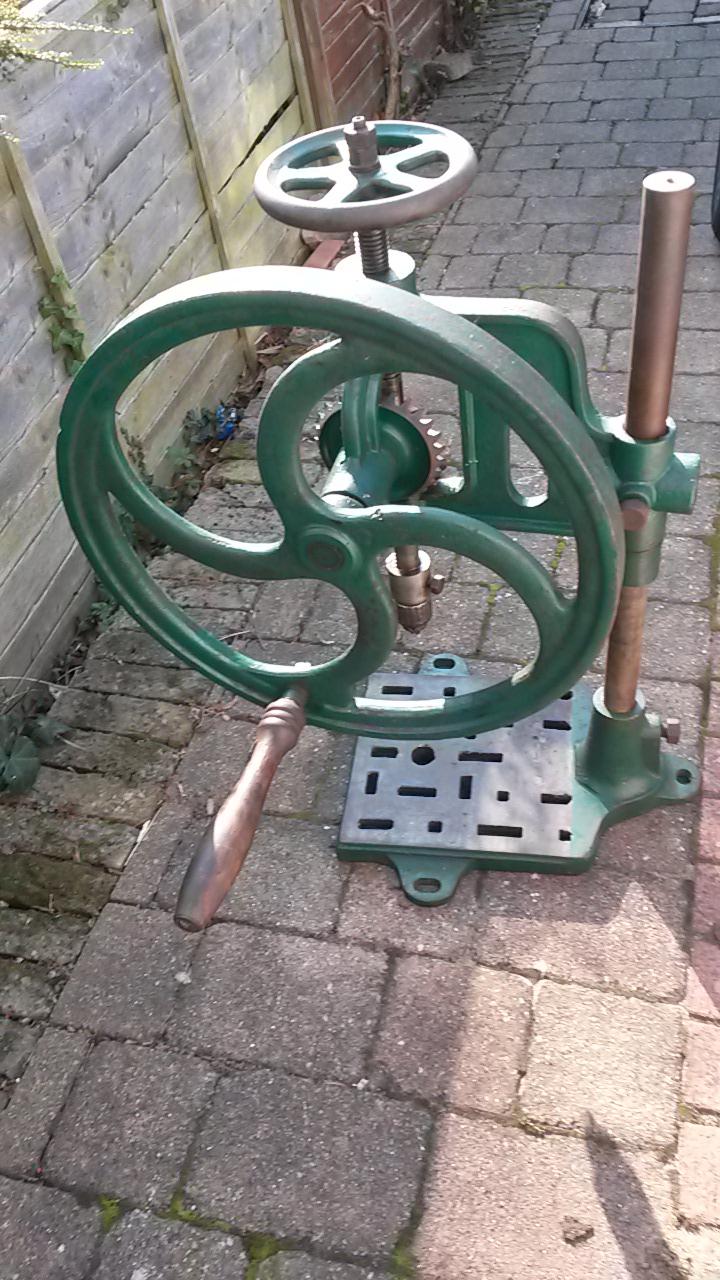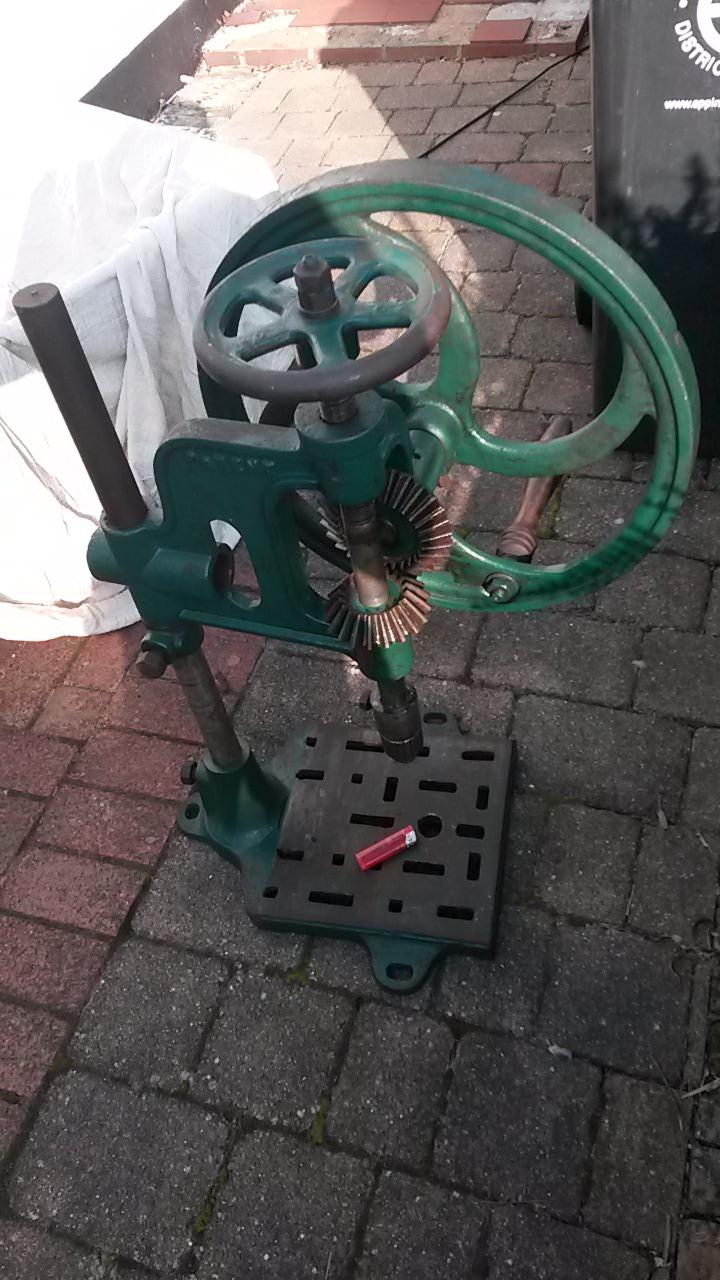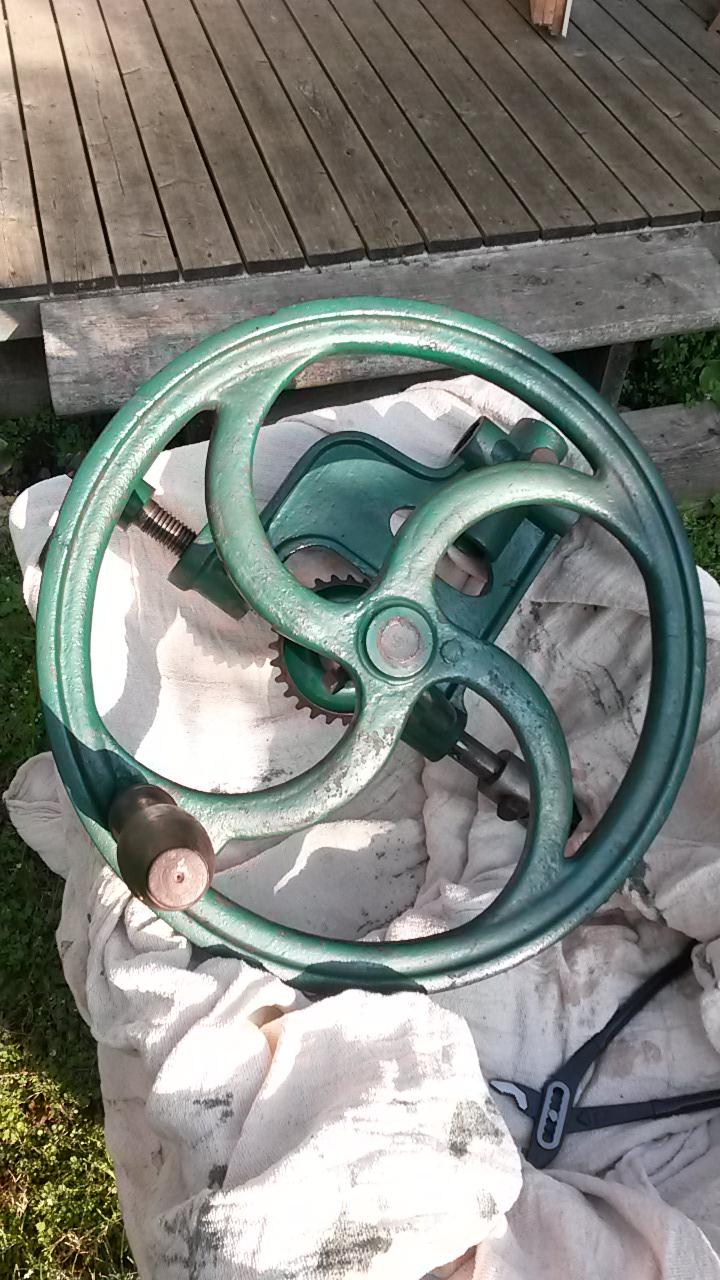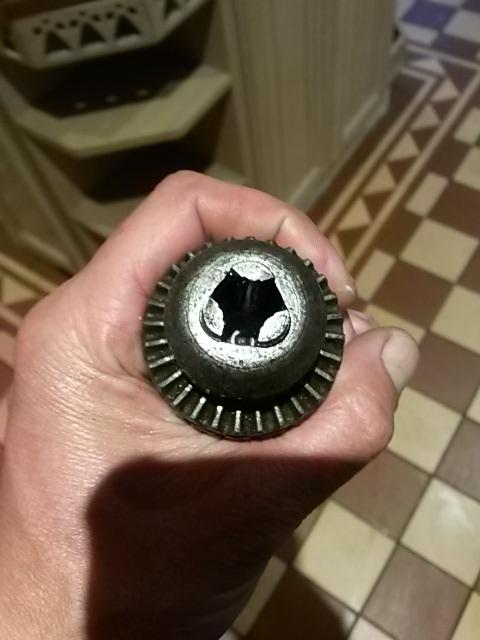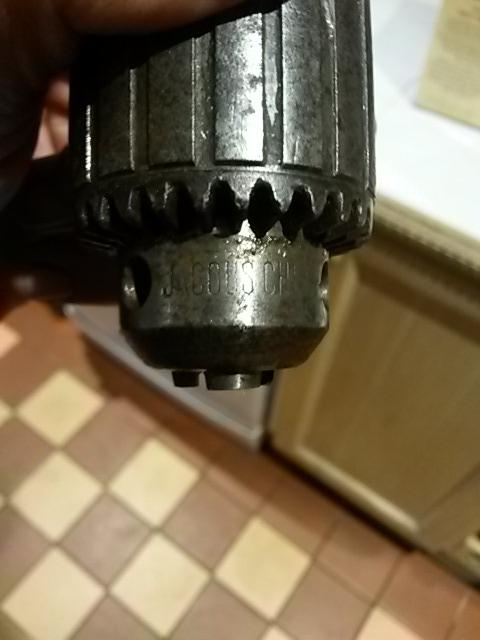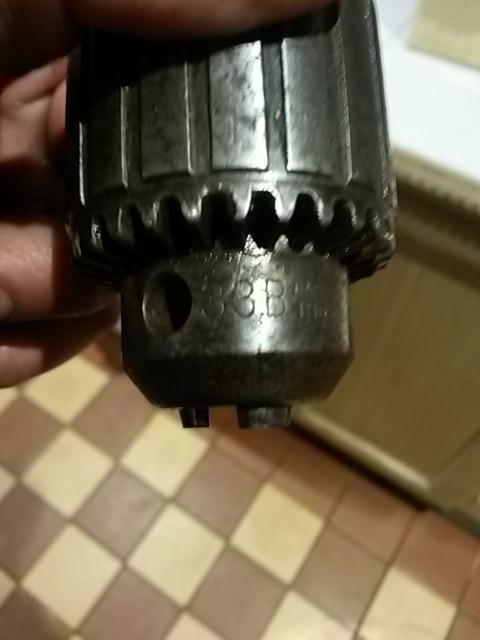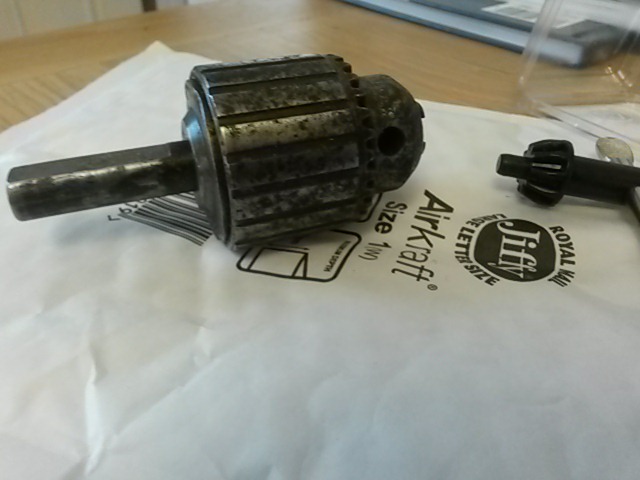I'll post this here as I already have plenty of ways to drill holes in wood... but until now, I've not had a proper cast iron bench drill for metalwork. So I was pleased to find this one for £16 on eBay, local pickup:



It looked like it was sound underneath the surface rust, so I set to with a wire brush so now it looks like this:



I did use electrolysis for the big rusty base, and it worked well.
The surface finish is boiled linseed oil, thinned down with turps.
I think it might originally have had an auto feed, but one speed manual will do for me!
I've no idea of maker or date - but there is this one clue:

Does anyone recognise that logo?



It looked like it was sound underneath the surface rust, so I set to with a wire brush so now it looks like this:



I did use electrolysis for the big rusty base, and it worked well.
The surface finish is boiled linseed oil, thinned down with turps.
I think it might originally have had an auto feed, but one speed manual will do for me!
I've no idea of maker or date - but there is this one clue:

Does anyone recognise that logo?














































